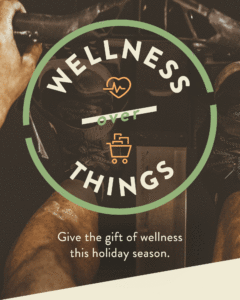So what does a plant-based diet look like in practice? I touched on that a bit in this post by reviewing an example grocery list and what I made with all the food…but I think in general we present a lot information in support of a plant-based diet and a lot of recipes but not much of a practical guide. So here’s the beginning of a three-part blueprint!
I hope it will address the 3 biggest perceived obstacles to improving your diet:
- It’s expensive
- It’s hard to get enough protein
- It’s hard (to grocery shop, to eat out, to prepare food)
Part I will cover the why (FAQ), Part II the what (daily meal options), and Part III the how (a weekly menu, eating out, shopping tips).
First things first, the FAQ!
- It’s expensive: A vegan diet that relies on packaged fake this and faux that can be expensive; a whole food diet based on vegetables, fruits, dried beans, and whole grains, though, is the cheapest available. Between us, Derek and I eat enough for four non-bodybuilding adults and our grocery bill is now around $175/week or $15 a day per person (we eat out a few times). Again, see here for details.
- It’s hard to get enough protein: From the highly recommended book Eat to Live:
Which has more protein – oatmeal, ham, or a tomato? The answer is that they all have about the same amount of protein per calorie. The difference is, the tomato and the oatmeal are packaged with fiber and other disease-fighting nutrients, and the ham is packaged with cholesterol and saturated fat…I see about twenty to thirty new patients per week, and I always ask them, “Which has more protein – one hundred calories of steak or one hundred calories of broccoli?” When I tell them it’s broccoli the most frequent response is “I didn’t know broccoli had protein in it.” I then ask them, “So where did you think the calories in broccoli come from? Did you think it was mostly fat, like an avocado, or mostly carbohydrate, like a potato?”…When you eat large quantities of green vegetables you receive a considerable amount of protein.
Dr. Fuhrman includes a chart comparing protein per calorie for foods such as a Burger King cheeseburger, yogurt, peas, lentils, spinach, and tofu. Guess which foods have the most protein per calorie? Green vegetables, with spinach as the overall champion. Popeye was right! I can speak from experience as well in that the greatest recent change in my diet has been adding green vegetables to breakfast and doubling my portions of vegetables at every other meal while reducing my protein powder intake by 2/3. Result? My muscles are pretty much the biggest they’ve ever been…I had been training really hard all along but evidently I wasn’t giving my body the fuel it needed to make something of all the hard work. After all, how does a gorilla, rhinoceros, or elephant get so damn big? Greens!
- It’s hard (to grocery shop, to eat out, to prepare food): Part III will cover this in much greater detail, but briefly…Grocery shopping actually becomes pretty simple when you’re just replenishing staples like grains and legumes and having fun picking out the freshest, prettiest vegetables. Fresh whole food doesn’t need much in the way of fancy sauces and things to taste good, so as your tastes change your recipes will naturally simplify and therefore your shopping lists will shrink. I used to make all kinds of cream sauces and complicated spice combos for our food (you can see that in my earlier recipes!) but now I don’t want to cover up the flavors of the food. Vegetables, grains, and legumes can generally be found anywhere at any store, too, making any perceived difficulty in making do on a vegan diet out in the boonies evaporate…it is hard to find fake meats and cheeses and so on, yes, but the truth is that stuff is not good for you anyway so you may be luckier if you can’t easily access it. Manufactured, mechanically produced food should not make up more than 10% of your diet. Treat it as an indulgence. As for eating out, you will have plenty of options as long as you avoid American chain restaurants! They have nothing for anyone seeking healthy food beyond maybe some wilted iceberg lettuce. Mexican, Thai, Chinese, Ethiopian, Greek, Lebanese, and of course vegetarian restaurants all have plenty of options. Again, look for Part III to get into the specifics.




I get pleasure from, result in I found exactly what I was
having a look for. You have ended my 4 day long hunt!
God Bless you man. Have a great day. Bye